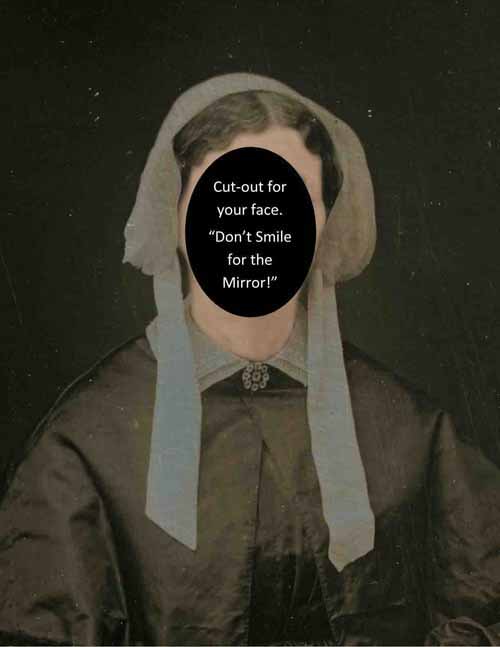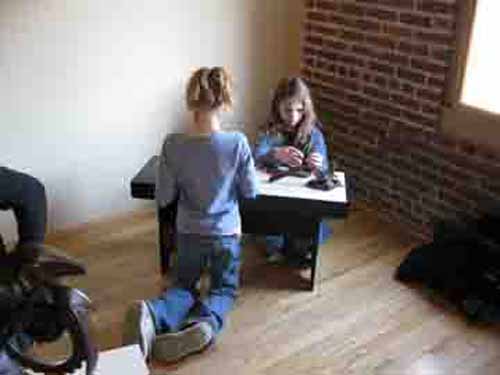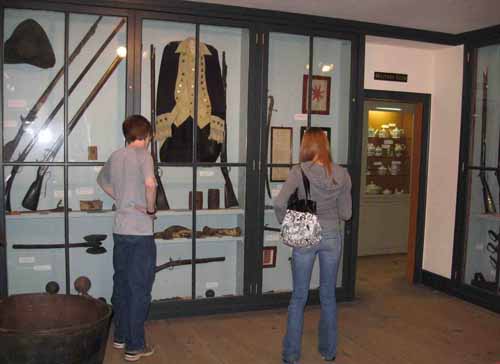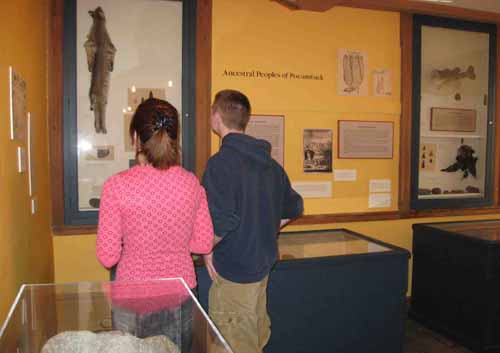|
|
Contextual Learning Portal Youth Curators: Teens Design Museum "Touch-Its"
Basics- Project TitleYouth Curators: Teens Design Museum "Touch-Its"
- ThemeTeam Approach, Civic Literacy, Universal Design
- Submitted BySheila Damkoehler, Marilyn McArthur, Jeremy Rogers
- OrganizationFrontier Regional High School/Pocumtuck Valley Memorial Association & Memorial Hall Museum Partnership
- Brief DescriptionStudents serve as consultants, advisors and designers, creating "touch-it" stations within a museum, historical society or other cultural organization. These "touch-its" are designed to appeal especially to tactile learners, making museum exhibition areas accessible to people of all ages and educational background.
- Materials / ResourcesPuzzle cubes, magnets and magnetized boards, art/craft supplies, access to quality color printer for reproduction photographs, graphics and interpretive labels.
- Team membersHigh School classroom teacher(s), students, museum outreach staff, public organization/venue, other school and business partners
- Pre-requisite knowledgeVisit to the museum/cultural organization to review settings and exhibits in order to determine most appropriate areas to focus on.
- Technical support neededMuseum/cultural organization staff, access to information about the collections/exhibits, possibly carpentry/painting assistance or instruction.
- Any modifications or extensions for particular student populations?Quoting our lead CSL teacher, "Kids are expert at being kids." Various student populations can advise what type of touch-its would appeal to their age or interest group.
Key Questions- Key QuestionsHow can museums create environments that follow the principles of Universal Design? How can they engage the Youth Voice to help them design their exhibits and programs?
- Connections: How or why was this topic identified? Why is it meaningful?Boston`s Museum of Science describes Universal Design as "...about inclusion. In museums, it goes beyond accessibility, to educational concept. It defines an approach that uses multisensory, multimodal experiences as an educational tool - the means of communicating an exhibit`s main point."
- Background Research: What resources were used to find background information for this project?Boston Museum of Science website on Universal Design, Gene`s Exhibit Pages,
-
Web Link: http://www.mos.org/exhibitdevelopment/access/ Web Link: https://www.msu.edu/~dillenbu/exhibits/exshell.html - Outcomes: What was the outcome? How was it shared or applied in the community?Students compiled a list of ideas and recommendations to present to the museum curator and director. Some immediate modifications will be made, such as better signage making people aware that they CAN touch the "My Facebook c. 1900" interactive developed by students and museum staff last year to accompany the museum`s "Don`t Smile for the Camera" exhibit and the puzzle cubes on the adjacent bench. Other changes inspired by the student list are being considered, including expanding that interactive area to include a new element: "Don`t Smile for the Mirror."
-
 
View/Download File: /project18_0623/My Facebook c. 1900 wall
Units / Activities - Day 1:
1 hourMuseum staff meets with students to discuss the museum mission, Universal Design and the challenges museums are facing today.Classroom visit, with museum staff bringing the Mission Statement, photographs and/or examples of current "touch-its" (in our case, the interactive area accompanying the "Don`t Smile for the Camera" exhibit"--see photos in Key Questions section--as well as those from the recent off-site exhibit co-curated by these Psychology students` classmates in the Humanities course. This is also a "getting-to-know-you" outreach opportunity for building future relationships.
-
  
- Day 2:
1 hourStudents have an unstructured visit at the museum with an eye toward evaluating how "family-friendly" the exhibits are. The group gathers afterwards for reporting, brainstorming and making recommendations.Students wander in small, self-chosen groups at their own pace, encouraged to take notes and record their ideas. If the museum is open to the public at the time, consideration for other visitors should be discussed.
-
    
- Day 3:
1 hourOptional follow-up meeting. What did the museum do with the students` ideas? In our case, one seemingly impossible idea (too expensive, cumbersome, not enough space, etc.) actually inspired a related, more manageable idea. Students suggested having a Polaroid camera and props within the "Don`t Smile for the Camera" exhibit area. Museum staff are now experimenting with an easy, inexpensive and immediately do-able version of this interactive concept: a mirror and enlarged daguereotypes, each mounted on foam core with the face cut out, for people to see what they look like if they "Don`t Smile for the Mirror"
-

Instructional Techniques - Project-based Learning In a collaborative project, student consultants work with the museum to solve a problem and fulfill a museum need
- Group/Partner WorkStudents advise about variations in learning styles for "touch-it
- Hands-On Exposure Students design layouts, models, or other mock-ups for museum
Assessment Techniques- Collaboration with ClientUngraded formative assessment throughout the project
- Client SatisfactionThe museum implements student input into the design of a new museum interactive
Tags = history | culture | civic-literacy | universal-design | creativity/innovation | Subject = ELA, History, Arts, Technology, Service_Learning | Grade Level = HS | Time Period = | Program/Funding = 354 |
Direct website link to this project: http://ContextualLearningPortal.org/contextual.asp?projectnumber=18.0623
|











